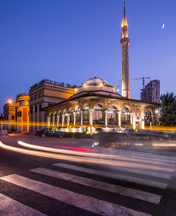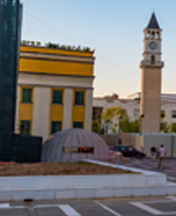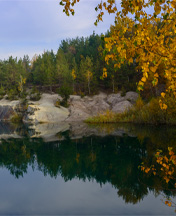The history of Tirana is a story of resilience and evolution that reflects the rich mosaic of Albania's past. Tirana's origins date back to ancient times, with evidence suggesting that the area was inhabited since the Palaeolithic era. However, it was not until the Ottoman period that Tirana began to emerge as a significant settlement. Tirana was officially founded in 1614 by Sulejman Bargjini, a local Ottoman leader who built a mosque, a bakery, and a public bath (hammam), laying the foundations for what would later become the city centre. The choice of location was strategic, as Tirana was situated at the crossroads of important trade routes connecting the Adriatic Sea with the interior of the Balkans. This location helped Tirana gradually develop into a bustling city. For much of its early history, Tirana remained a settlement overshadowed by larger, more established regional cities. However, the town began steadily developing during the 18th and 19th centuries as it became an increasingly important administrative and commercial centre under Ottoman rule. The construction of significant religious and public buildings during this period further strengthened Tirana's role in the area. A turning point in Tirana's history came in 1920 when the Congress of Lushnja declared Tirana the temporary capital of Albania, a later permanent decision. This designation marked the beginning of Tirana's transformation from a regional town into the political and cultural heart of the nation. The city experienced rapid development, with the construction of government buildings, schools, and infrastructure reflecting its new status as the capital. The history of Tirana in the 20th century is characterised by periods of significant change, especially during the communist era. After World War II, Albania became a communist state under the leadership of Enver Hoxha, and Tirana was at the centre of this transformation. The city saw extensive urban planning and development, constructing wide boulevards, public squares, and Soviet-style buildings. However, this period also significantly restricted personal freedoms and isolation from the outside world. The fall of communism in the early 1990s ushered in a new era for Tirana. The city began to open to the world, accompanied by a wave of modernisation and cultural renaissance. Today, Tirana is a vibrant, dynamic city that reflects its historical heritage and ambitions for the future. From its Ottoman roots to its role as the capital of a modern European nation, the history of Tirana stands as a testament to the spirit of Albania and its people.















